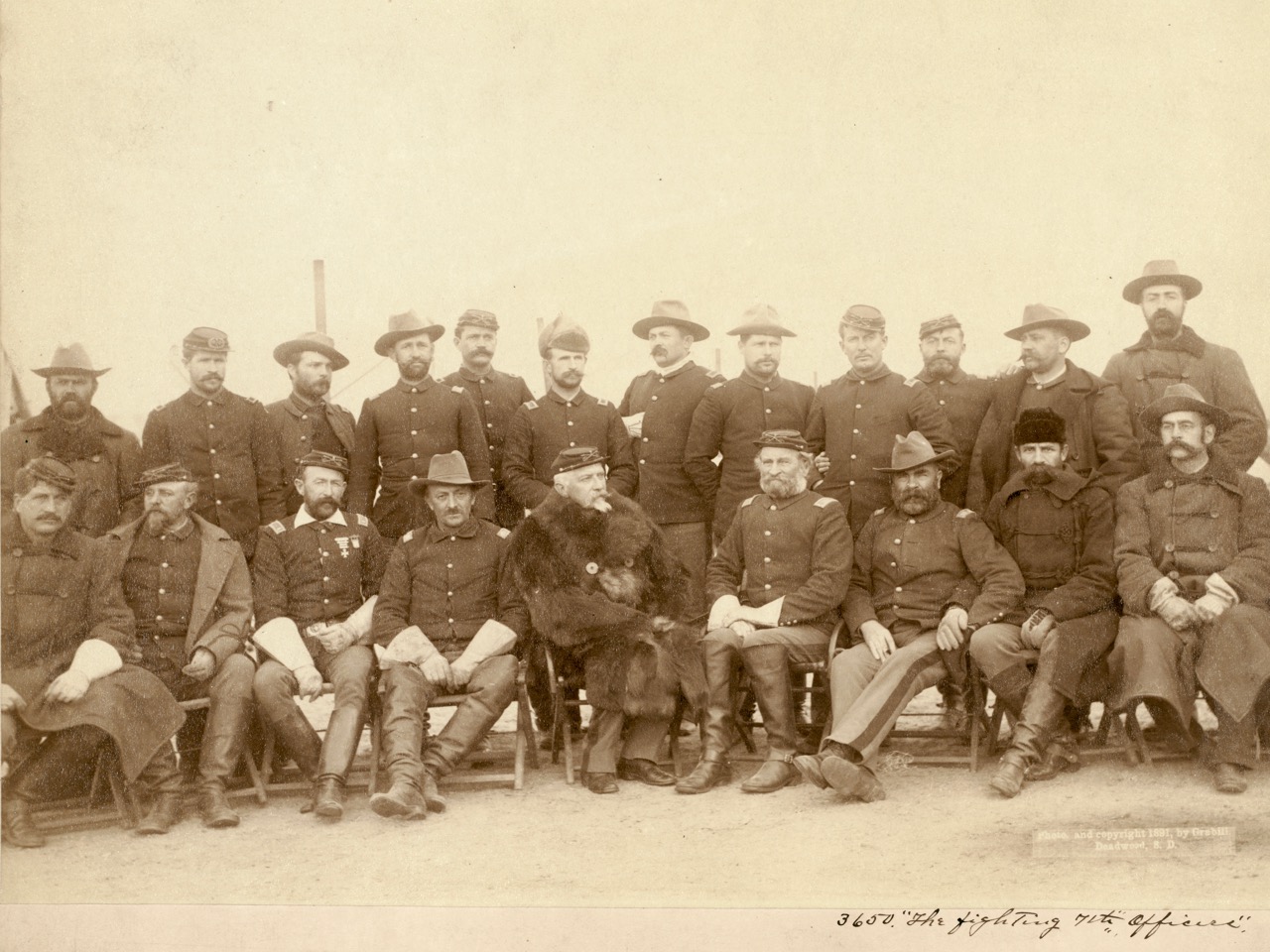Man changes plan to honor Wounded Knee killers
By Richie Richards
Native Sun News Today>Correspondent
RAPID CITY – The plan to open a museum for Medal of Honor recipients, including those from the Wounded Knee Massacre of 1890, has been quickly abandoned and replaced by a new plan to open an art gallery featuring Native American art.
John Johnson had planned to open the South Dakota Medal of Honor Museum in the Rushmore Mall in Rapid City later this year.
Native Sun News Today was the first to break the story last week about the plans to open the museum to showcase the more than 3,500 awardees of the medal. This would have included the twenty medals given to members of the U.S. 7th Calvary who participated in the killing of over three hundred Lakota men, women and children on December 29, 1890 near Wounded Knee Creek on the Pine Ridge Indian Reservation.
Once this story hit local mainstream media, the community of Rapid City and surrounding areas were quick to chime in and voice their opinions and concerns on the
cancellation of the original plan. Johnson has publicly stated he has received backlash and death threats as a result of his initial plan.
 A photo
titled "The fighting 7th officers" shows the members of the 7th U.S. Cavalry
Regiment at the Pine Ridge Agency in South Dakota, just two weeks after the
Wounded Knee Massacre of December 29, 1890. The men who participated in the
massacre were awarded Medals of Honor by the U.S. government. Image: U.S.
Library of Congress
A photo
titled "The fighting 7th officers" shows the members of the 7th U.S. Cavalry
Regiment at the Pine Ridge Agency in South Dakota, just two weeks after the
Wounded Knee Massacre of December 29, 1890. The men who participated in the
massacre were awarded Medals of Honor by the U.S. government. Image: U.S.
Library of Congress
The story of the Wounded Knee Massacre is long and detailed. History is written by the conquerors, this includes American history. Depending on which side of the story a person has learned, the true story of Wounded Knee is that of a pitiful people (Hunkpapa and Mniconjou) fleeing for their lives to meet up with the Oglala at Red Cloud Agency in Pine Ridge. Their group had been intercepted near Wounded Knee by a detachment of the 7th Calvary on December 28, 1890, and on the following morning is when the tragedy occurred.
On the morning of December 29, 1890, as the cavalry soldiers were in the process of disarming the Lakota, a shot rang out and this was the inadvertent signal given to the United States Army to open fire on the hundreds of men, women and children. Four Hotchkiss mountain guns mowed down the innocent victims as they ran for the safety and security of Wounded Knee Creek and its surrounding prairie lands.
In the case of the Wounded Knee Massacre, this was the ending moment for the Indian Wars. This was the last great massacre and killing of indigenous people by the United States in order to secure the land for settlement.
This moment in history is patriotic for those on the side of the fence who believed “Indians” were savages and not deserving of land and title. But for those whose ancestors died and were wounded during Wounded Knee, this massacre was a final separation from the pre-historic past and cemented their future lives onto reservations and limited borders.
Despite having happened nearly 129 years ago, Wounded Knee, to the Lakota and surrounding tribes, took place like it was yesterday. This massacre is the source of pain, loss, anger, trauma, and depression for many who believe the United States government killed their ancestors mercilessly and without retribution.
Many believe the 7th Calvary got away with murder. By today’s standards, a regiment would not be allowed to massacre unarmed civilians without being prosecuted for the war crimes, and would surely not be decorated and honored with a Medal of Honor.
A local television station had posted on their social media page an image of the museum entrance inside of the Rushmore Mall with the caption: “This space in Rushmore Mall was supposed to open as the South Dakota Museum of the Medal of Honor this fall. The project has come to a halt after backlash from the Native American community regarding the Wounded Knee Massacre.”
This caption and photo was the signal for local residents and descendants of immigrants and settlers to the area to begin firing their patriotic support for such museum in the Rushmore Mall. But unlike 1890, Native Americans were quick to defend the bold decision made by John Johnson.
Contact Native Sun News Today Correspondent Richie Richards at
richie4175@gmail.com
Copyright permission
Native Sun News Today
Join the Conversation
Related Stories
Gallery
for Native artists planned instead of 'Medal of Honor' museum (May 29, 2019)
Native
Sun News Today: Museum honors men who slaughtered Lakota people (May 24,
2019)
O.J.
Semans to presidential candidates: Rescind medals for massacre at Wounded
Knee (April 12, 2019)
O.J.
Semans: Move forward in reconciliation and rescind honors for massacre at
Wounded Knee (February 11, 2019)
O.J.
Semans: Stop honoring the men who massacred my people at Wounded Knee
(February 4, 2019)



